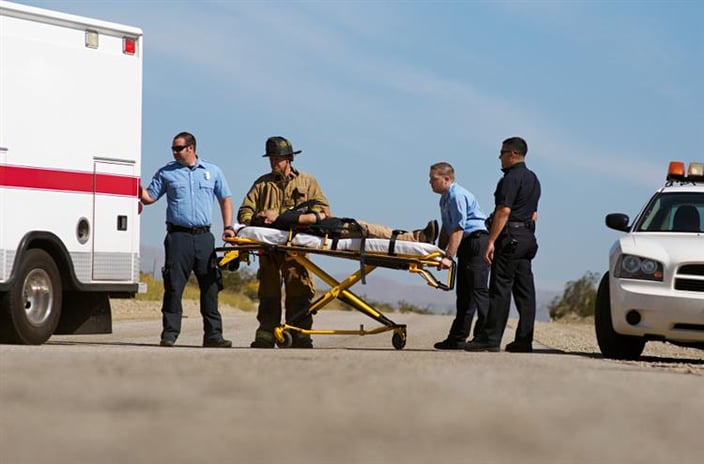 The child was pulled from the deep end pulseless and apneic. CPR was initiated immediately, and by the time you and your crew arrive on scene, a faint pulse is detectable. Your partner begins ventilating the patient, when suddenly the child vomits. Your potential save is once again in peril; this time from choking and aspiration. You reach for your portable suction unit and realize you left it on the truck. A crew member races back to the rescue to retrieve it as you log-roll the child onto his side, all the while struggling to ventilate, maintain c-spine, and continue resuscitative efforts. Not a good scenario.
The child was pulled from the deep end pulseless and apneic. CPR was initiated immediately, and by the time you and your crew arrive on scene, a faint pulse is detectable. Your partner begins ventilating the patient, when suddenly the child vomits. Your potential save is once again in peril; this time from choking and aspiration. You reach for your portable suction unit and realize you left it on the truck. A crew member races back to the rescue to retrieve it as you log-roll the child onto his side, all the while struggling to ventilate, maintain c-spine, and continue resuscitative efforts. Not a good scenario.
We’ve all been caught without the appropriate equipment. Sometimes the call turns out to be a completely different scenario than dispatched. Other times, the patient takes a sudden turn. But when responding to any type of respiratory emergency, especially cardiac arrest, your portable suction unit should always be on hand, for no other piece of equipment can take its place.
Yet, still, we become complacent. When you’re reaching for your equipment, what flashes through your mind?
Portable Suction: Questions and Conundrums
First, there’s the obvious: what are the chances I’ll need the suction unit? Perhaps it’s been a while since you’ve used it. It’s common for the equipment we don’t use on a daily basis to get slowly pushed to the back of the compartment. You wouldn’t dream of leaving behind your O2 bag or monitor. The suction unit may simply get overlooked when you are scrambling for your equipment. But when it comes to clearing the airway, your portable suction unit is your most valuable tool. Make sure it stays front and center in the compartment.
Perhaps you reach for the suction unit but then flash back to truck checkout… Did I check the suction? Are the batteries charged? Is it clean and ready to go? Checking your portable suction unit is a vital step in equipment checkout each shift, so be sure your unit is clean, charged, and operable. And if you work in remote settings or spend a good deal of your shift away from the station, having a portable unit that can run on alkaline batteries or on defibrillator batteries, can come in handy when a charger is not available.
Maybe it’s just you and your partner on scene. Personnel shortages are an unfortunate common occurrence in emergency response. Perhaps your backup is responding from across the city. Or you work in a rural community where you depend on volunteers. Many EMS responders work with limited personnel, which is why a portable, lightweight suction unit is a mainstay in such systems. A small, dependable unit can easily be kept in the airway bag, always on hand, and ready for any respiratory emergency.
So let’s return to our original scenario and magically rewind the response. You arrive at the patient and palpate a faint fluttering heartbeat. Your partner begins ventilations and the patient suddenly vomits. Fortunately, in this playback, you grabbed your portable suction unit when you arrived on scene. You crank it on and efficiently clear the boy’s airway. With a few more ventilations, the child begins breathing on his own. Once he is stabilized, he is transported to the hospital where he regains consciousness with his faculties in check. A disaster is averted, you have another save under your belt, and your valiant efforts are recognized by your community, all because you remembered your portable suction unit. A win-win.














